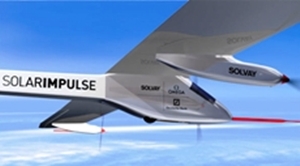Solar powered plane lands in Washington in journey across US
17 Jun 2013
A fully solar powered airplane flew in from St Louis and landed in Washington yesterday, in its next-to-last leg of a journey across the US aimed at boosting support for clean energy technologies.
 The Solar Impulse landed at Dulles International Airport outside Washington at 12:15 am EDT. It would remain in the US capital until it takes off for New York in early July in the last lap of its historic trip.
The Solar Impulse landed at Dulles International Airport outside Washington at 12:15 am EDT. It would remain in the US capital until it takes off for New York in early July in the last lap of its historic trip.
If the spindly experimental aircraft were to complete the journey according to plan, it would be the first solar-powered plane capable of undertaking day and night flight operations across the US.
"It proves the reliability and potential of clean technologies, and this is crucial in pushing our message forward," Swiss co-founder and pilot of the solar plane project, Bertrand Piccard said in the statement. The Solar Impulse project is the brain child of Piccard and fellow pilot Andre Borschberg.
The Solar Impulse combines the wingspan of a jumbo jet with the weight of a small car, and is a test model for a more advanced aircraft the team plans to build to fly around the world in 2015.
Completing the first leg of its journey from San Francisco to Phoenix in early May, the plane flew later that month from Phoenix to Dallas.
In early June, the Solar Impulse made the trip from Dallas to St Louis, later flying to Washington in nearly 30 hours of flying over two days.
The ultra-light plane is a single-seater reaching a maximum speed of 50 mph on its own power – though boosted by a strong tail wind it could reach up to 100 mph.
The project has shown for the first time that day and night, solar powered long distance flight was possible. According to Piccard, what people needed to understand was that the airplane could fly day and night with no fuel just because very efficient technologies were being used.
For all the futuristic technology, however, the flight across America has an element of the pioneering days of aviation: a solo pilot in the cockpit relying on an ability to improvise in tricky situations.
The four engines of the air craft are fuelled entirely by solar power, gathered by the 12,000 photovoltaic cells on the plane's fuselage, and stored in around 400 kg of batteries.
On calm, clear days, the plane can rise to a maximum altitude of 28,000 feet (8,500 metres), and then enter into a slow, gliding descent, switching off the engines to save power. The process is repeated several times in the course of long flights, giving a feel of a slow-motion airborne rollercoaster ride.
.webp)





















